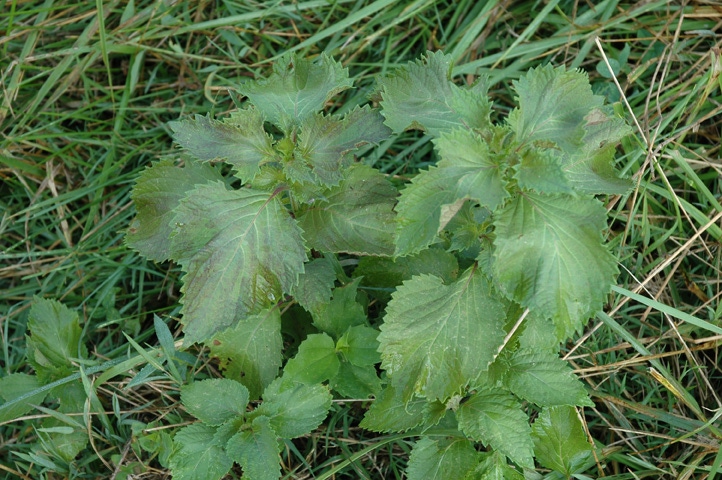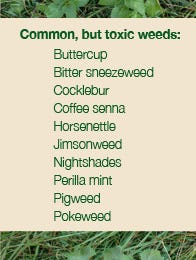Don’t let toxic weeds cost you livestock.
December 27, 2013

A weedy pasture can present a buffet of toxins to livestock.
But poisonings are rare enough, and usually light enough, that your first clue may be dead animals on the ground. And, by then, there may be more than one.
What happens more commonly is that poisoned animals just do poorly and appear unthrifty, due to a less-than-lethal dose of a toxin.
It’s rare, but it happens.
The probability of poisonings increases during and after a drought, says Pat Burch, a Virginia-based field scientist for Dow AgroSciences. But it can happen anytime.
Many common broadleaf weeds are toxic to livestock. Sheep and horses tend to be the most sensitive followed by cattle and then goats. Old and young animals are more sensitive.
Why it happens
Fortunately, livestock usually avoid more than a nibble on toxic weeds because the plants typically taste bad, smell bad, have stickers or a combination of those factors.
But there are exceptions – when something changes the desirability or palatability of these weeds.
Lack of good forage is the most common cause of poisoning. When livestock are left with little else to eat, they will go to weeds. Likewise, a mineral deficiency or an unbalanced diet may push them to new plants.
Anything that wilts the leaves of a toxic plant may, for a time, improve its palatability so animals will graze it. That wilting may be from frost, cutting or herbicides.
Take precautions
“It doesn’t take long for leaves to dry up and go crispy, but before that happens, those leaves may become more palatable,” Burch says.
 “And that’s dangerous with toxic plants, especially if there’s little else there to graze.
“And that’s dangerous with toxic plants, especially if there’s little else there to graze.
Black cherry is notoriously toxic. If you cut a black cherry, remove the entire plant from a pasture before livestock can get to the leaves, Burch says.
“Perilla mint is toxic. If you want to spray, spray it early in the season,” he says. “Later, when forage is more limiting, animals are more likely to graze it after it’s sprayed. And the toxin level naturally goes up in the fall.”
Before you spray a pasture, take note of what your animals will have to eat as the weeds die, Burch says. If you have lots of toxic weeds, and little forage, it will be wise to find livestock another home until treated weeds are “crispy-dry.”
“There aren’t any rules of thumb about moving animals when spraying a pasture with a certain percentage of weeds,” Burch says. “So err on the side of caution.”
Other helpful resources:
Winter Treatment To Help You Get A Jump On Spring Brush Control
Pasture Clover: When Do You Sacrifice Clover For Weeed Management?
About the Author(s)
You May Also Like

.png?width=300&auto=webp&quality=80&disable=upscale)
.png?width=300&auto=webp&quality=80&disable=upscale)
